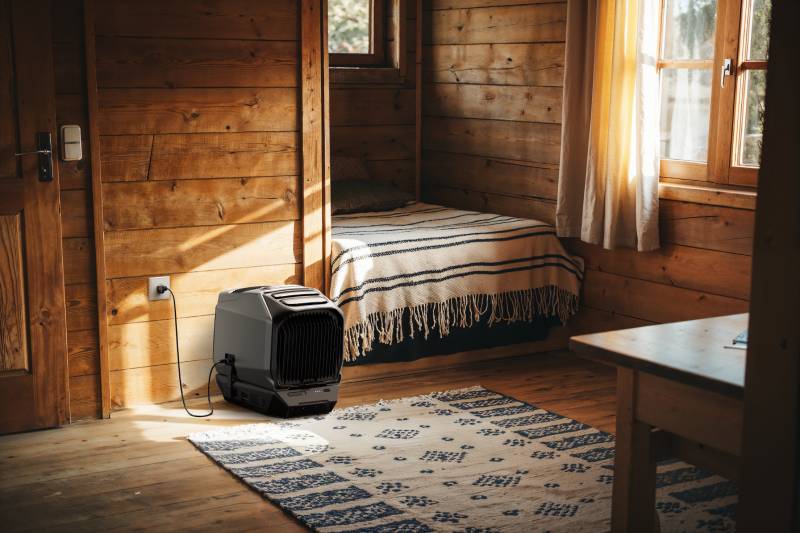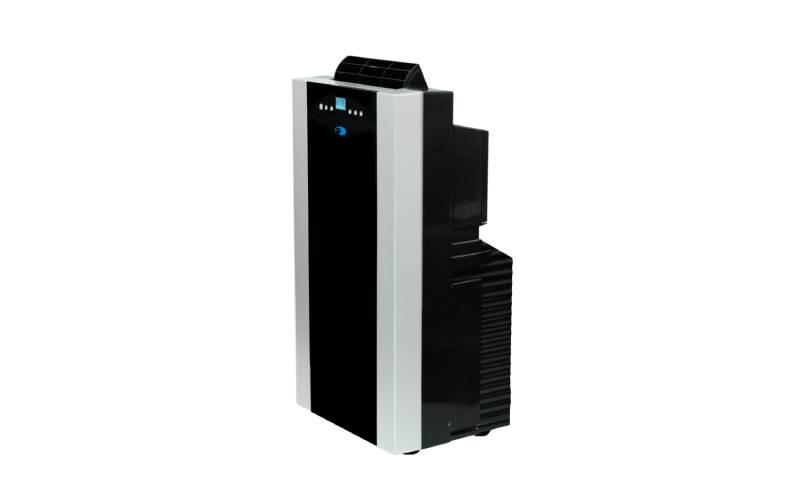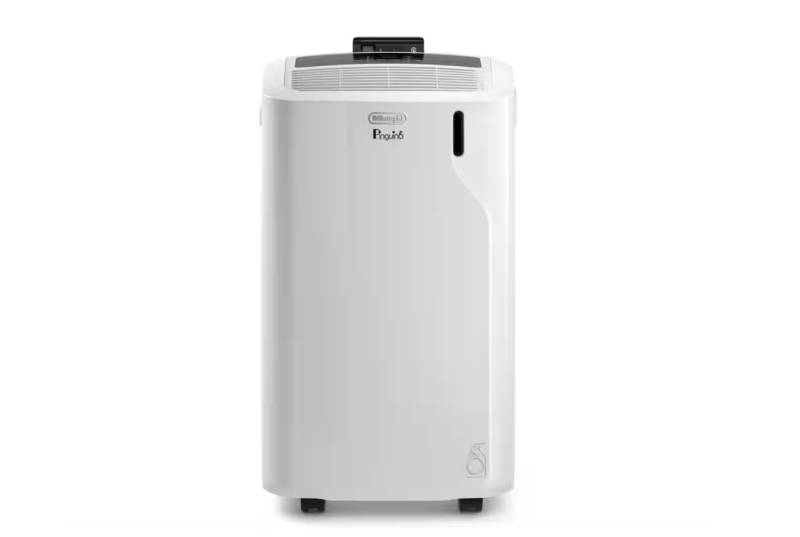How to Choose the Best Portable Air Conditioner for Your Home in Australia 2025
Portable AC units are relatively affordable, easy to install, and can provide reliable cooling in areas where central air isn’t an option.
For many homeowners, they’re an appealing alternative to large air conditioners that require a lot of energy — and hike up the electricity bill.
Knowing which is right for you can be challenging with so many models and features available.
Here, we’ve compiled all the information you need to choose the best portable air conditioner for your home. Considering factors like size, power output, energy efficiency rating, noise level, and more, you can select the best portable AC unit for your needs and budget.
Why Should You Consider a Portable AC Unit for Your Home?
Portable AC units are an excellent choice for anyone who needs extra cooling in their home — whether you have central air that just isn’t cutting it or don’t have central AC installed. Portable ACs are relatively affordable and easy to install, and you can move them from room to room if needed.
Plus, portable units don’t require permanent installation like window air conditioners. They’re ideal for renters and those living in condos or apartments where you can’t make permanent changes to the building structure. Landlords and HOAs may restrict or prohibit installing ACs, making a portable AC a lifesaver in hot temperatures.
Portable ACs are also easy to travel with, making them great for campers, motorhomes, trailers, and other mobile homes. With assembly-free portable AC units, you can cool the air around you no matter where you are — outside, in the car, or at your campsite — with no installation or setup required.
Using portable AC units can also help you use less energy, helping keep your electric bills down. A central AC unit can use up to 2.3 kWh per hour, while portable AC units may use just 1.176 kWh per hour. Switching to a portable AC unit can reduce your cooling bill substantially, depending on your per kWh electricity prices.
Factors to Consider When Choosing a Portable Air Conditioner
If you’ve decided that a portable air conditioner is the best choice for your home, you’ve completed the first step in the buying process. Now comes the tough part: deciding which portable AC unit is best for you among the many designs, models, functions, features, sizes, and more.
The factors below can help you find a portable AC unit that satisfies your household needs. Compare different models based on your priorities to make an informed decision.
Here’s everything you should consider to choose the best portable AC for your home.
1. Cooling Capacity (BTU Rating)
The cooling capacity refers to the AC unit’s BTU rating. The BTU (British Thermal Unit) rating represents the amount of heat the unit can remove from a space per hour, which affects how effectively it can cool your home.
As a general rule, you’ll need about 20 BTUs for each square foot of space you want to cool. For smaller spaces like tents or motorhomes, only need a few hundred BTUs might be needed, but for larger spaces, you’ll want a portable AC that can pack more punch and keep things cool with a higher BTU rating.
2. Size and Dimensions
The size of the portable AC unit you choose should depend on the size of your space. You want an AC that’s not too big or too small for your room but just right. Remember that a larger air conditioner will cool faster, but may be louder and less energy efficient than smaller models.
The size may also depend on what your home can accommodate. When measuring the size of your unit, make sure to check both the height and the width of the unit.
3. Portability
You’ll also want to consider size, dimensions, and weight if you plan to use your portable AC unit in more places than just your home. In this case, you also have to consider travelling with it in your car or motorhome.
Some “portable” ACs take up considerable space and add significant weight and bulk to your load. WAVE 2 is light enough to carry at 32.0 pounds (14.5 kg), but not all portable models will be as lightweight. Consider where you’ll use it most often to decide if portability is a priority.
4. Placement
Another factor to consider is the placement. You can set some portable units on the floor, while others must be mounted or hung from a window. Your choice for portable air conditioner depends on what works best for your room and where you have space to accommodate it.
5. Dual-Hose vs. Single-Hose System
The hose system your portable AC unit uses affects its overall efficiency. Single-hose systems draw in hot air from outside and cool it down using a condenser, while dual-hose systems use two separate hoses — one to exhaust the hot air outside and another to bring in cooler air from outdoors. While dual-hose units tend to be more efficient, they also come at a higher price, whereas single-hose models are more budget-friendly but typically consume more energy to cool the same area.
6. Power Source
You’ll also want to consider where your AC unit is getting its power. Some require AC plugs, while others may be able to run using other power sources.
7. Noise Level
Consider the noise level of your portable AC unit when shopping for one. Portable air conditioner noise levels can range from quiet (around 50 dB, the level of a quiet refrigerator) to loud (around 70 dB, the noise level of a washing machine or dishwasher).
8. Budget
Depending on the size and features you need, prices can range from a couple of hundred to several thousand. That’s why it’s essential to consider your needs and priorities first before looking for affordable portable AC units.
Best Portable Air Conditioners for Home
Below, we’ve selected 4 top-rated portable air conditioners for home that stand out for their performance, portability, and user-friendly features.
1. EcoFlow WAVE 3 Portable Air Conditioner
The EcoFlow WAVE 3 is a powerful, wireless, and truly portable air conditioner designed for ultimate versatility. With no installation required, it’s perfect for home use, car camping, RVs, tents, boats, off-grid cabins, and even semi-truck use. Boasting an industry-leading 6100 BTU cooling and 6800 BTU heating capacity, it delivers year-round comfort anywhere. Designed with pet safety in mind, this small portable air conditioning unit offers smart features like automatic temperature monitoring and app-based alerts to help prevent overheating—especially useful when pets are left in vehicles. The 8-hour battery pack and fast-charging options ensure uninterrupted use, while smart remote control and multiple modes—cooling, heating, auto, fan, and dehumidification—let you fine-tune your climate in any scenario.
Key Specs:
Cooling/Heating Capacity: 6100 BTU (Cooling); 6800 BTU (Heating)
Dimensions: 20.4×11.7×13.2 in (519×297×336 mm)
AC Input: 100-240V~50/60 Hz, 820W Max
Noise Level: 44-58 dB
Placement: Designed for car camping, RV, tent, boat, off-grid cabin, home use, or semi-truck use

2. Whynter ARC14S (Dualhose) Portable Air Conditioner
The Whynter ARC-14S (Dual Hose), a powerful and eco-friendly portable air conditioner for home, delivers 14,000 BTU (9,500 BTU SACC) of cooling for spaces up to 500 sq. ft. It functions as an AC, dehumidifier, and fan, with an Activated Carbon filter and washable pre-filter for improved air quality. Featuring a dual-hose design for faster cooling, this portable aircon uses CFC-free R-32 refrigerant and RoHS-compliant components, combining performance, energy savings, and environmental responsibility.
Key Specs:
Cooling Capacity: 14,000 BTU (9,500 BTU SACC)
Hose Configuration: Dual-hose system
Power Source: Standard AC power
Placement: Designed for indoor use in rooms up to 500 sq. ft.

3. De’Longhi Pinguino Portable Air Conditioner PACEM82K
The Pinguino Portable Air Conditioner PACEM82K offers powerful cooling with a 9,400 BTU/h (2.4 kW) capacity, ideal for rooms up to 80 m³. It features 3 fan speeds, a dehumidifying function removing up to 43 liters per day, and a 24-hour electronic timer and thermostat. With an intuitive LED display and remote control, operation is simple. Designed for convenience, it includes a window kit, integrated handles, and castor wheels for easy portability.
Key Specs:
Cooling Capacity: 9,400 BTU/h (2.4 kW)
Dimensions: 425x345x700 mm
Weight: 30.2kg
Noise Level: 47/50 dB
Placement: Designed for room-to-room use, includes a window kit for installation

4. EcoFlow WAVE 2 Portable Air Conditioner
The EcoFlow WAVE 2 is one of the best portable air conditioners and heaters, delivering 5100 BTUs of cooling and 6100 BTUs of heating—all without installation. It cools or heats a 10m³ space in just 5 minutes and runs whisper-quiet at 44 dB. With an optional swappable battery, it charges via AC, solar, car, or power station, offering up to 8 hours in Eco Mode. Ideal for RVs, tents, boats, and off-grid living, it’s compact, eco-friendly (using R290 refrigerant), and named Best Portable AC at CES 2023. Comfort, power, and portability—all in one.
Key Specs:
Cooling Capacity: 5100 BTU
Dimensions: 20.4 × 11.7 × 13.2 in (518 × 297 × 336 mm)
Power Source: AC power, solar power, battery power, car charging
Noise Level: 44–56 dB
Placement: Ideal for motorhomes, vans, smaller rooms
EcoFlow WAVE 2 Portable Air Conditioner
Final Thoughts
Choosing the best portable air conditioner for your home in Australia comes down to understanding your unique space, lifestyle, and cooling needs. Whether you’re living in a small apartment, planning off-grid adventures, or just need extra cooling support, portable AC units offer flexibility, efficiency, and convenience. By considering essential factors like BTU rating, size, portability, noise level, and budget, you can find a model that perfectly matches your environment. With recommended portable air conditioner options like the EcoFlow WAVE series, staying cool and comfortable has never been easier—no matter where you are.
FAQs
What Are the 3 Most Important Factors for an AC Unit?
The three most important factors when shopping for a portable AC are the cooling capacity, portability, and power source. Get one powerful enough to cool your space while being portable enough to carry, and be sure its power source will last you all day and night.
Where is the best place to put a portable air conditioner?
The best place to put a portable air conditioner is near a window for easy venting of hot air, and close to a power outlet. Ensure there’s at least 20 inches of clearance around the unit for proper airflow. Avoid placing it in direct sunlight or in a corner where airflow may be restricted.
Is it worth buying a portable air conditioner in Australia?
It is worthwhile buying a portable air conditioner in Australia, especially in rental properties or small spaces without built-in cooling. They’re easy to install, movable between rooms, and ideal for temporary heat relief during hot summers. While not as efficient as split systems, they offer flexibility and affordability. Just ensure you choose the right size for your room and check energy ratings for cost-effective performance.